6 Offline Registry Editors to Make Changes Without Regedit

If you’re facing issues like being unable to log into Windows or want to fix registry errors without booting into Windows, an offline registry editor is your solution.
It allows you to edit crucial keys like userinit.exe safely.
Find below the best tools in this category and how to use them:
Tools for Editing Windows Registry
When it comes to accessing the Windows registry without booting into Windows, there are several tools you can use. Here are the top options that can help you restore the userinit.exe key or fix other registry-related issues.
1. PC Regedit
PC Regedit is a free tool that allows you to access and edit the Windows registry without booting into the operating system. It’s ideal for cases like fixing userinit.exe when you’re unable to log into Windows.
- Download PC Regedit.
- Burn the downloaded
PCRegedit.isoto a CD. Refer to this guide on how to burn ISO images on a CD. - Boot up the computer with the PC Regedit disc, and it will load ISOLINUX.
- Once everything is loaded, you’ll see the “MyFileChooser” window. By default, you’re at the Config folder. Scroll down, select SOFTWARE, and click OK.
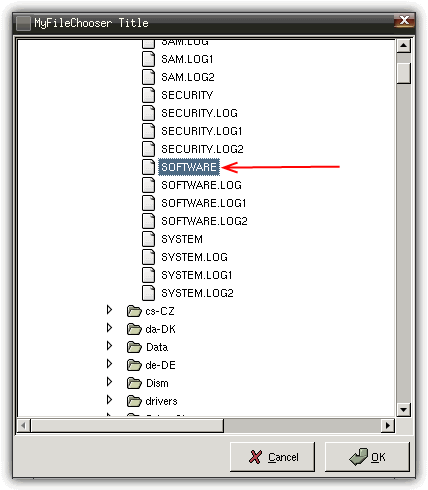
- Navigate to:
Root -> Microsoft -> Windows NT -> CurrentVersion -> Winlogon. - Look for the
Userinitkey and ensure its value is set to:makefileCopyEditC:\Windows\System32\Userinit.exe, (including the comma)
If the Userinit key isn’t there, right-click the right pane and select Add Key.
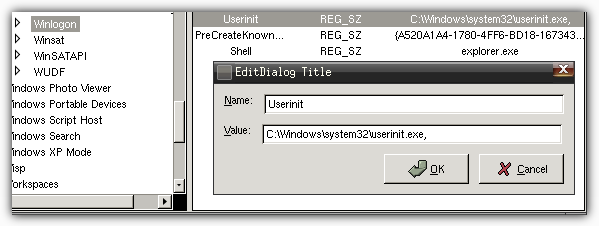
2. Hiren’s Boot CD
Hiren’s Boot CD is another powerful tool that provides a range of utilities to repair and recover Windows systems. It includes a registry editor that works in the Mini Windows XP environment, which can be used to fix userinit.exe issues.
- Download the Hiren’s Boot CD ISO.
- Burn the downloaded
Hirensbootcd.isoto a disc. Refer to this guide on how to burn ISO images on a CD. - Boot up the computer with the Hiren disc and select Mini Windows XP from the menu.
- When Mini XP is loaded, click the Hiren menu icon in the tray -> Registry -> Registry Editor PE.
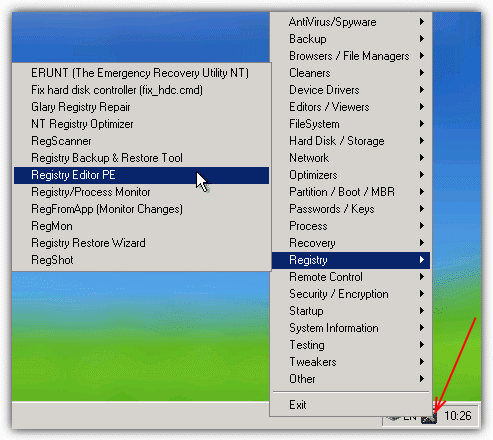
- When prompted, set the remote Windows directory (usually
C:\Windows) and press OK. - Click OK on each window to select the related registry hive. If you want to edit a registry value from
HKEY_CURRENT_USER, select Yes when asked to loadNTUSER.DATand locate the file in the user directory. - Expand HKEY_LOCAL_MACHINE, and the hives will automatically load with the
_REMOTE_prefix. Navigate to_REMOTE_SOFTWARE -> Microsoft -> Windows NT -> CurrentVersion -> Winlogon.
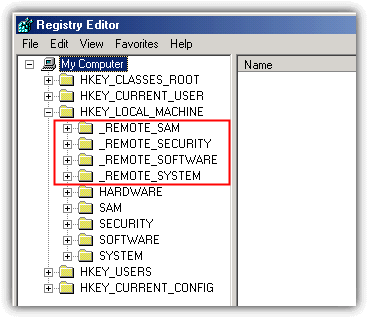
- Double-click Userinit and set its value to
"C:\Windows\System32\Userinit.exe,". Ensure you include the comma at the end.
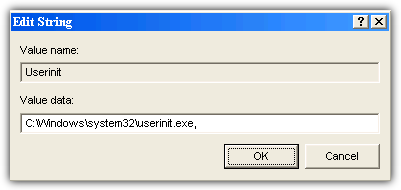
- Close the registry editor, and the hives will be automatically unloaded.
3. Lazesoft Recovery Suite
Lazesoft Recovery Suite is a comprehensive system repair tool that includes features like password resets and data recovery. It also provides an easy-to-use registry editor for fixing issues like userinit.exe without booting into Windows.
- Download Lazesoft Recovery Suite Home and install it.
- Run the Recovery Suite and create a bootable CD/USB. You can choose to burn it to a CD, write directly to a USB flash drive, or save the ISO file for later writing.
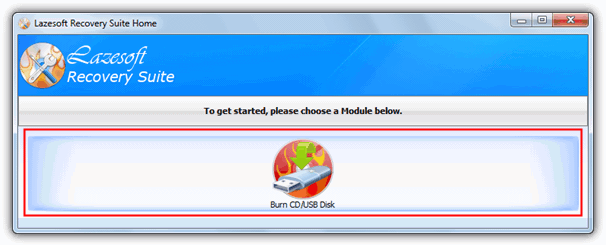
- Boot the computer with the CD/USB media. When the Home window opens, select Windows Recovery and choose your operating system to load the registry from.
- In the main recovery screen, click Registry Editor and then click the Registry Editor button. Lazesoft Recovery Suite can only edit
HKEY_LOCAL_MACHINE, which should be sufficient for most tasks since the Microsoft subkeys usually handle logon and startup issues.
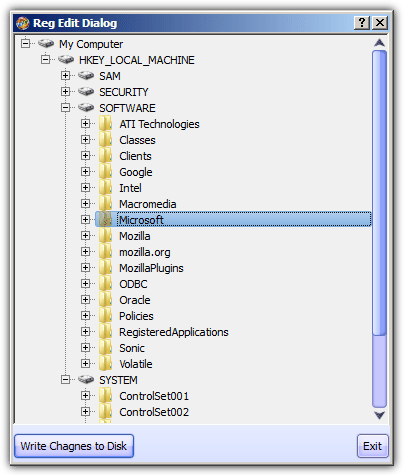
- Navigate to
SOFTWARE -> Microsoft -> Windows NT -> CurrentVersion -> Winlogonand find theUserinitvalue in the right pane. Double-click it and change the value to"C:\Windows\System32\Userinit.exe,".
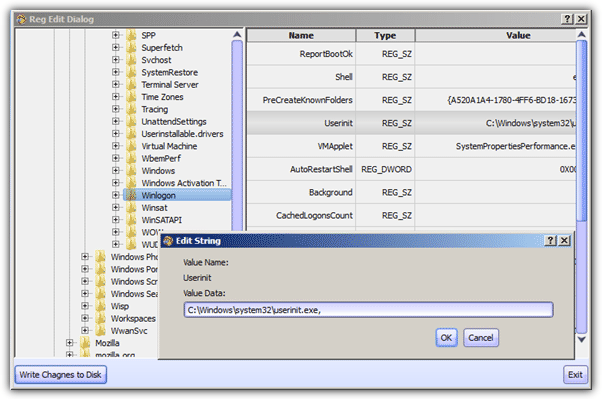
- After editing, click Write Changes to Disk.
4. UBCD4Win
UBCD4Win (Ultimate Boot CD for Windows) is another tool you can use to access the registry and fix userinit.exe or other startup problems. It provides a Windows-like environment for registry editing.
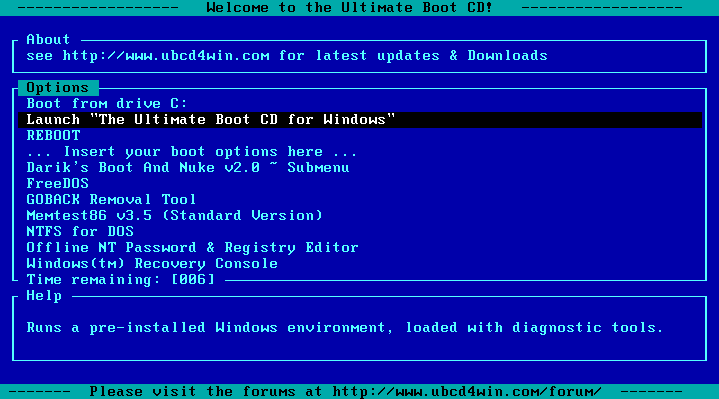
- Boot the computer with UBCD4Win.
- Once UBCD4Win loads.
- Click Start -> Programs -> Registry Tools -> RegEdit.
5. Offline NT Password & Registry Editor
Offline NT Password & Registry Editor is a free, powerful tool that can help you modify the Windows registry without booting into the OS. It works well for fixing registry issues related to startup and login problems like userinit.exe errors.
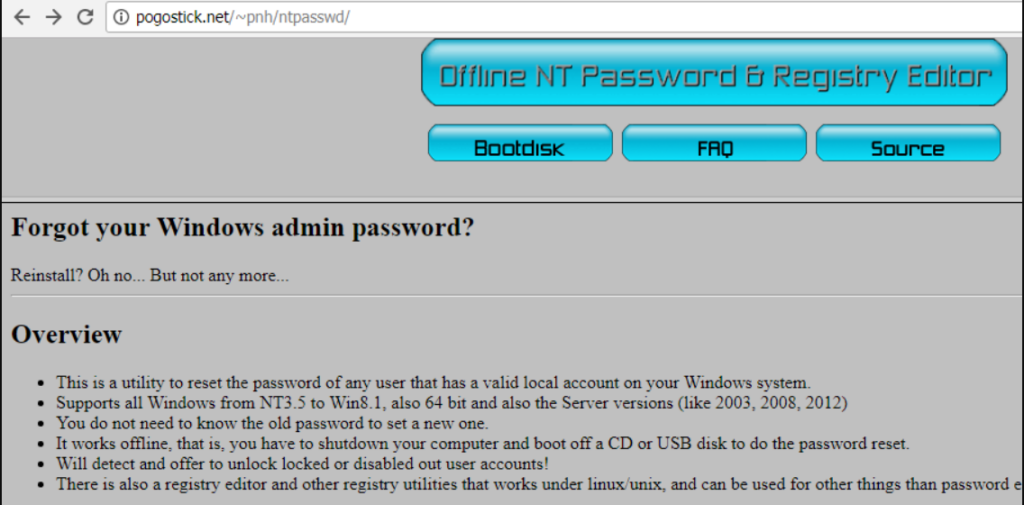
- Download Offline NT Password & Registry Editor.
- Create a bootable CD or USB drive with the tool by following the instructions provided on the website.
- Boot the computer with the Offline NT Password & Registry Editor tool.
- Once the tool loads, select the partition containing the Windows installation, and choose Edit the Registry.
- Locate the registry hive, usually found in
Windows\System32\Config, and proceed to the Winlogon key. - Edit the
Userinitvalue to"C:\Windows\System32\Userinit.exe,".
6. Trinity Rescue Kit (TRK)
Trinity Rescue Kit (TRK) is another advanced tool for fixing startup issues, including those related to userinit.exe. It allows you to access and edit the Windows registry outside the OS environment.
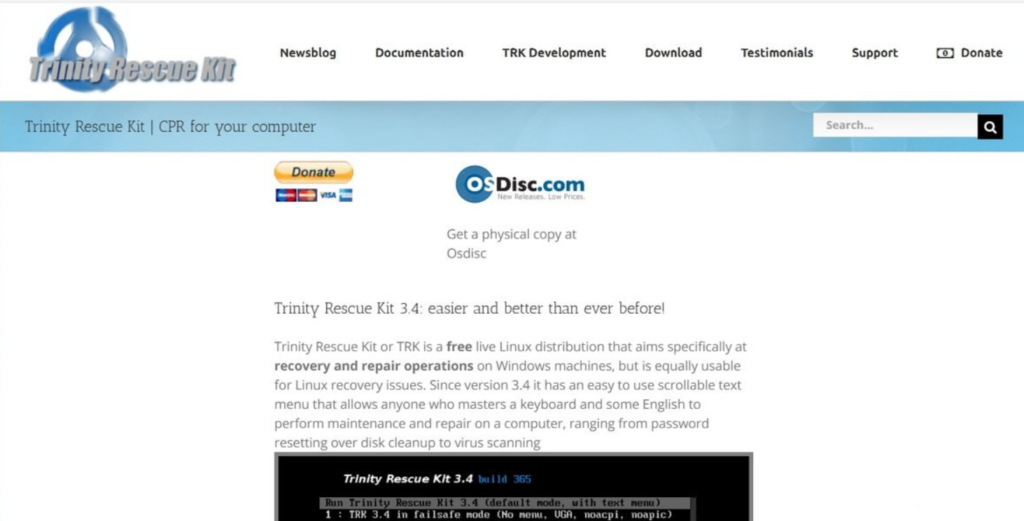
- Download Trinity Rescue Kit (TRK).
- Create a bootable CD or USB using TRK.
- Boot the system using the TRK disk.
- Once TRK loads, navigate to the registry editor and mount the Windows partition.
- Locate the HKEY_LOCAL_MACHINE registry hive, and navigate to the
Winlogonkey. - Modify the
Userinitvalue to"C:\Windows\System32\Userinit.exe,"and save the changes.
Methods for Fixing Userinit.exe in the Windows Registry
If you’re trying to fix userinit.exe, the steps are the same for all tools. Locate the Winlogon key in the registry, ensure that the Userinit key contains the correct value (C:\Windows\System32\Userinit.exe,), and save the changes.
Read more:
Conclusion
These methods provide multiple ways to edit the Windows registry and restore functionality if you’ve disabled userinit.exe or encountered other startup issues. If one method doesn’t work, don’t hesitate to try another.
For further reading, check out articles on how to fix other Windows issues or how to prevent malware from affecting your computer in the first place.





User forum
56 messages